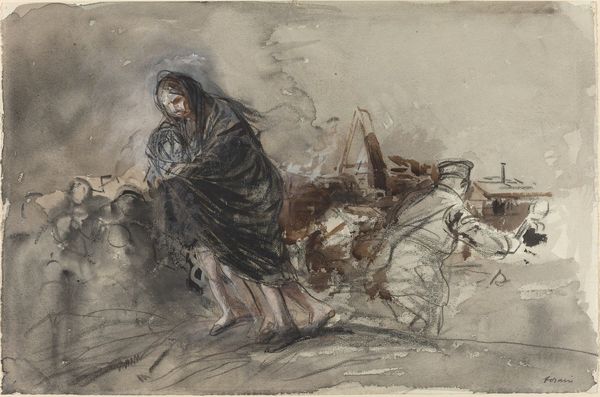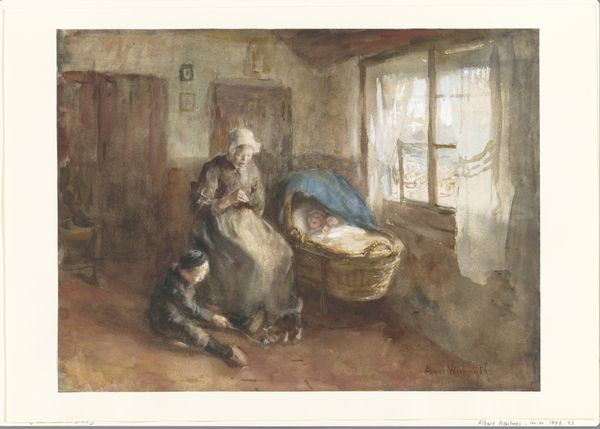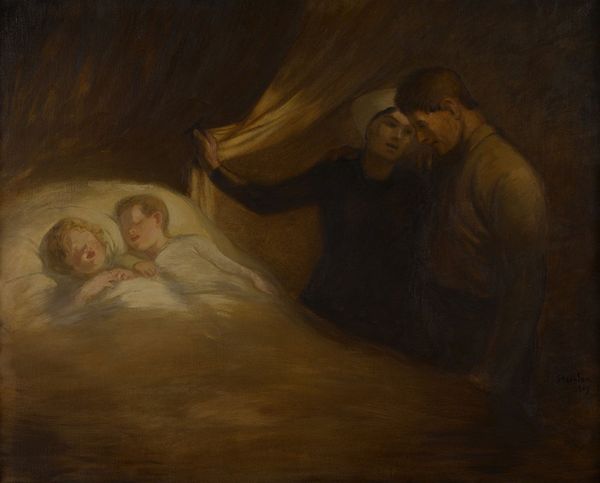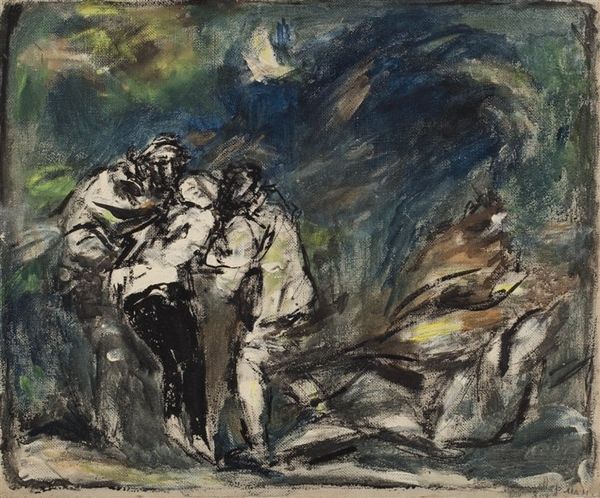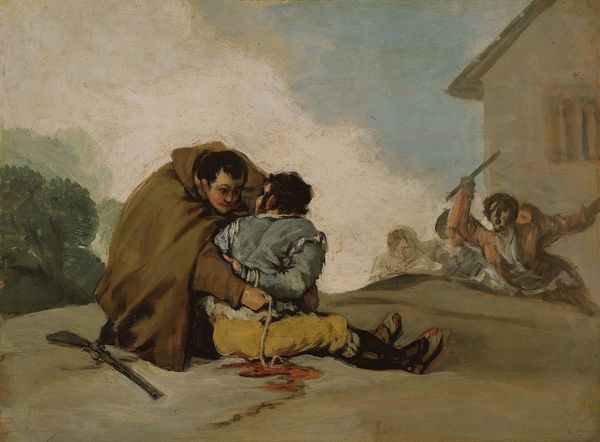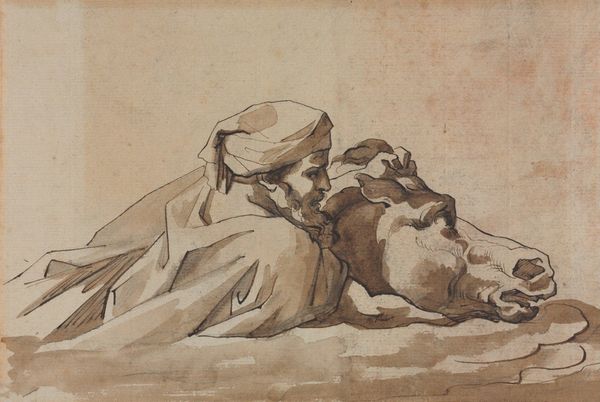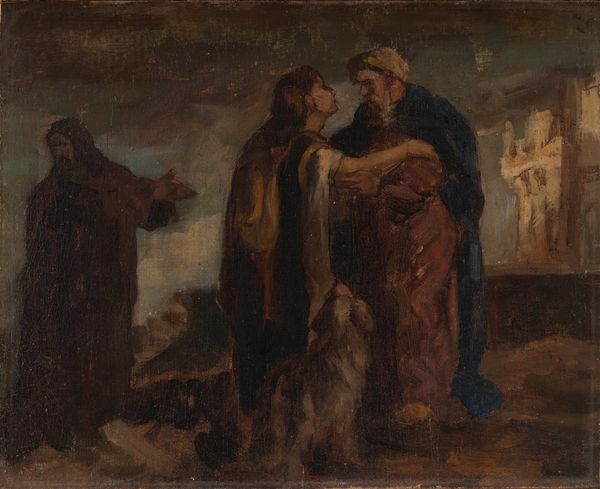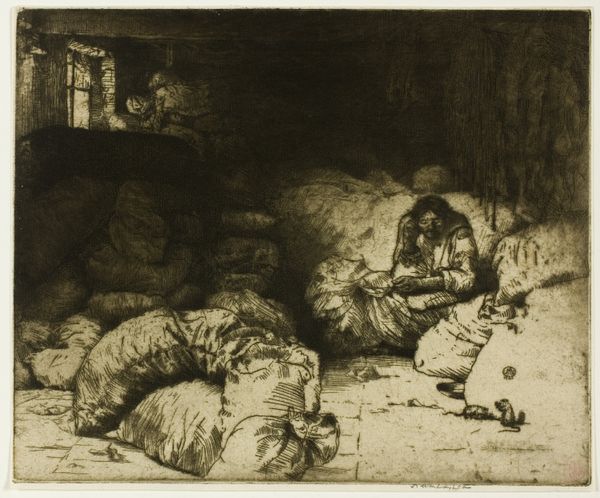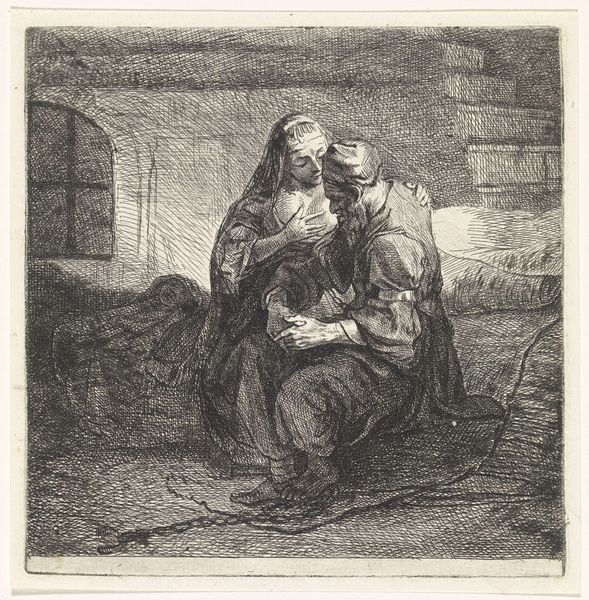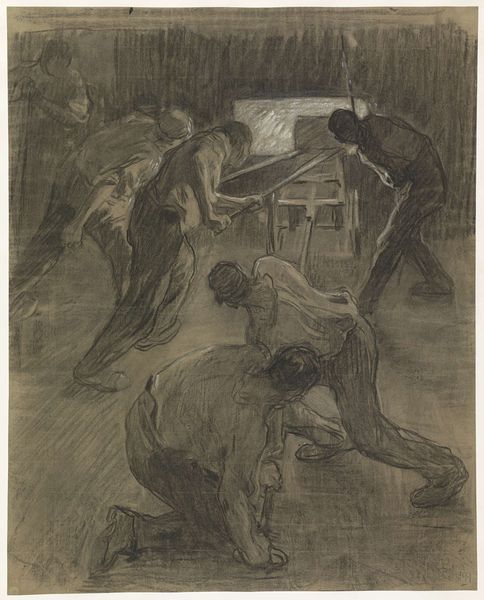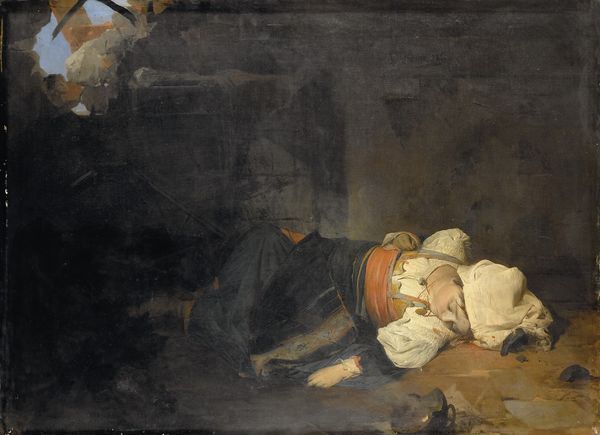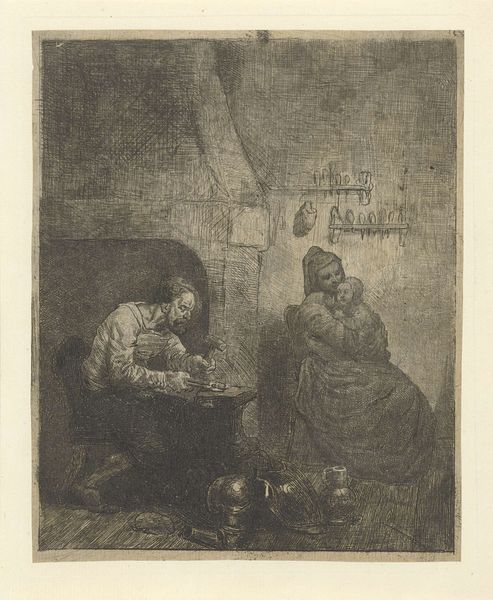
Dimensions: Image: 367 x 457 mm Sheet: 387 x 491 mm
Copyright: National Gallery of Art: CC0 1.0
Eugene Higgins made "The Sleeping Child," using, it seems, a mix of watercolor and crayon, building this muted, earthy scene. It feels like Higgins wasn't just depicting something but was feeling his way through it. The colors, all these browns and grays, create a mood of quiet intensity. You can almost feel the texture – the grain of the paper, the waxy touch of the crayon. Look at the way he's rendered the figures; they are all huddled together. There’s a real weight to them, and this conveys vulnerability. The drawing is not perfect. In fact, it’s a bit smudgy and raw and the looseness of it all brings out the emotions. Higgins’ work reminds me of Käthe Kollwitz, in her unflinching portrayal of human suffering. Both artists understood that art isn't just about beauty, but about bearing witness, about making visible the things we often prefer to ignore. It’s about acknowledging the complexities and contradictions of being human.
Comments
No comments
Be the first to comment and join the conversation on the ultimate creative platform.
